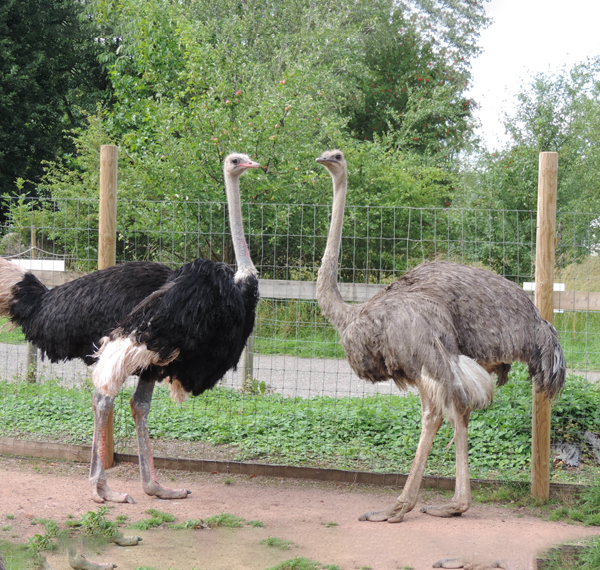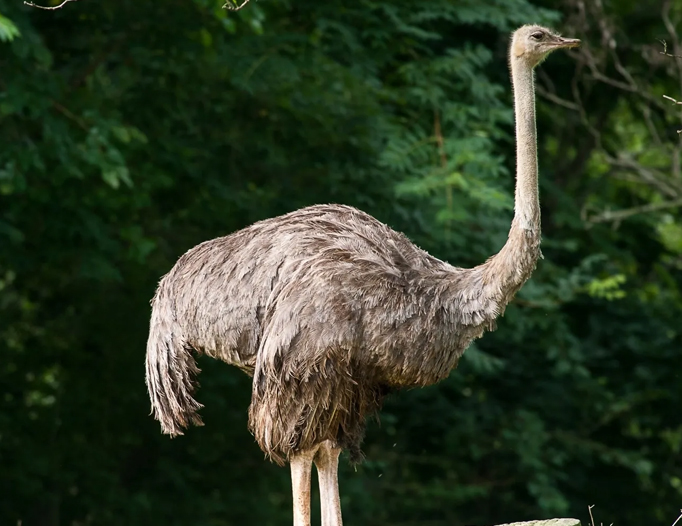Total Weight
Height
Diet
Lifespan
Total Weight
Height
Diet
Lifespan
The Ostrich is the largest living bird, native to Africa. It has long legs, a long neck, and cannot fly.
Ostriches are known for their incredible running speed and lay the largest eggs of any bird.
Unlike all other living birds, ostriches excrete feces separately from urine.
At Patna Zoo, there are three ostriches. Their enclosure is designed to mimic their natural habitat,
providing ample space to run and interact. These fascinating birds use their powerful legs not only
for running but also as a defense mechanism against predators. With their keen eyesight and strong
social behavior, ostriches continue to captivate visitors at the zoo.


The ostrich enclosure in Patna Zoo offers a spacious and well-designed habitat that mimics the bird’s natural environment.
With ample space to roam freely, the enclosure includes sandy grounds, shaded areas, and vegetation to provide comfort and stimulation.
The habitat is carefully maintained to meet the ostriches' dietary and behavioral needs, ensuring their well-being.
Visitors can observe these magnificent flightless birds as they display their natural behaviors, from swift running to
foraging. Informational boards educate visitors about their habitat, diet, and conservation. This enclosure provides
a safe and enriching space for ostriches while offering an engaging experience for visitors.
Patna Zoo’s ostrich enclosure offers visitors a close-up view of the world’s largest bird, allowing them to observe the ostrich’s impressive size, powerful legs, and curious nature.
Explore diverse habitats and learn about the planet’s most fascinating creatures
| Attribute | Details |
|---|---|
| Weight | Males: Around 100-160 kg, Females: Around 90-120 kg |
| Height | Typically 7-9 feet tall |
| Diet | Seeds, shrubs, grass, fruits, flowers, and small insects |
| Lifespan | 30-40 years in the wild, longer in captivity |
| Conservation Status | Least Concern |
| Population in the Wild | Stable population across Africa |
| Social Structure | Found in small herds, often moving together for safety |
| Unique Behavior | Ostriches are the fastest-running birds, reaching speeds up to 70 km/h, and they rely on powerful legs for defense |
| Feeding Pattern | Omnivores — foraging during the day, with a diet that adapts to their dry, savannah habitat |
| Feather Feature | Loose, soft feathers that provide insulation, but do not support flight |
| Closest Relatives | Closely related to emus, cassowaries, and rheas — all members of the ratite family |
Ostriches are omnivores, meaning they eat both plants and small animals. Their diet consists mainly of seeds, grasses, leaves, and flowers, along with insects, small reptiles, and even rodents when available. These flightless birds forage across open plains, constantly searching for food and adjusting their diet based on seasonal availability. Ostriches play an important ecological role by spreading seeds across their habitat, helping maintain plant diversity in their environment. Despite living in dry areas, they can survive with little water by getting moisture from the plants they eat. When water sources are nearby, they will drink regularly.
Open Now
All visits to Patna Zoo help fund our work both at the zoo and worldwide.